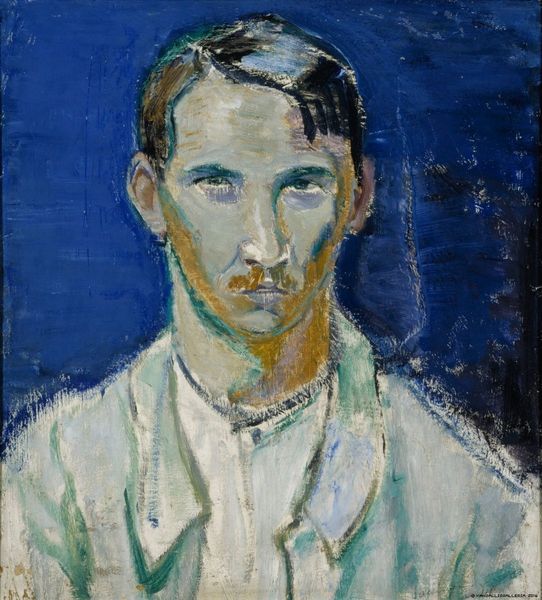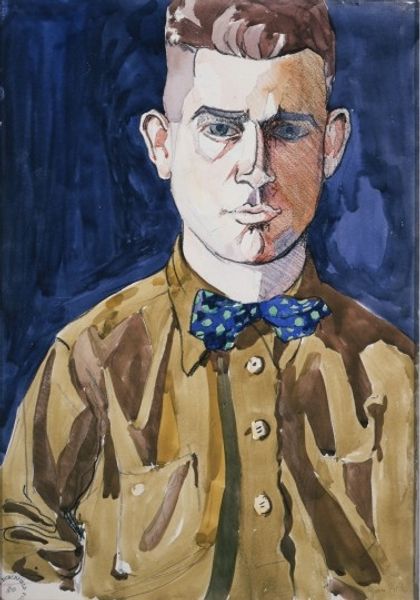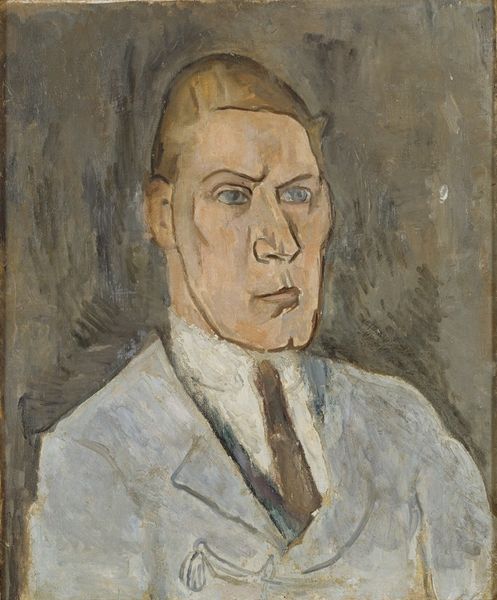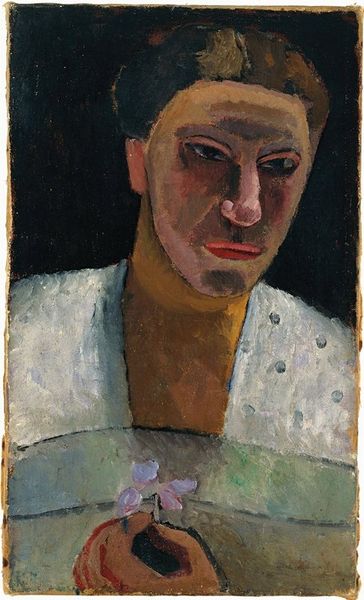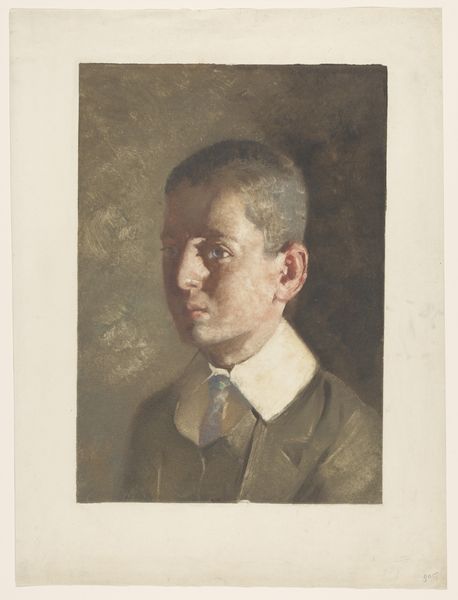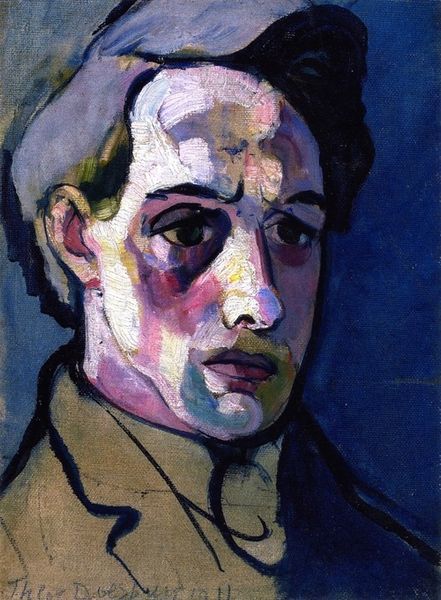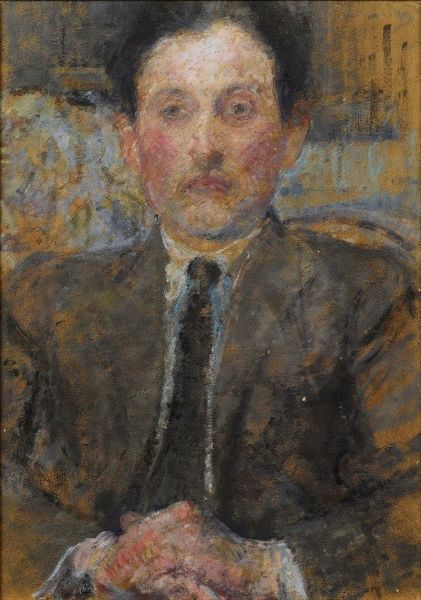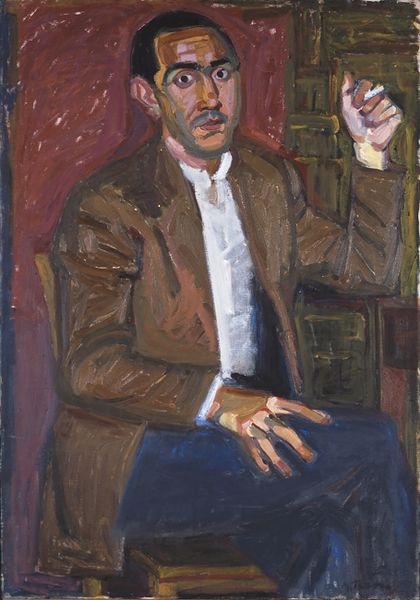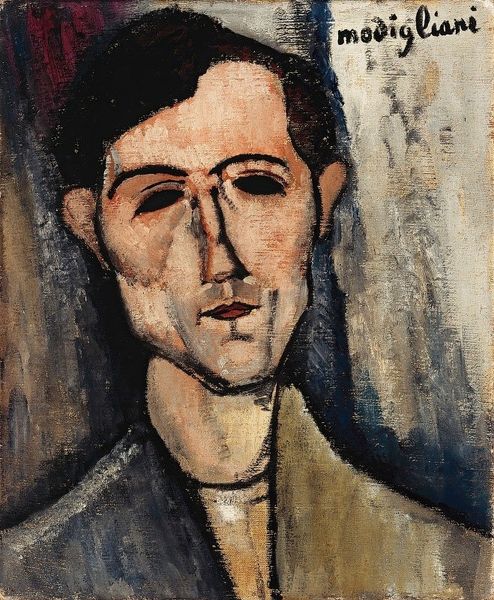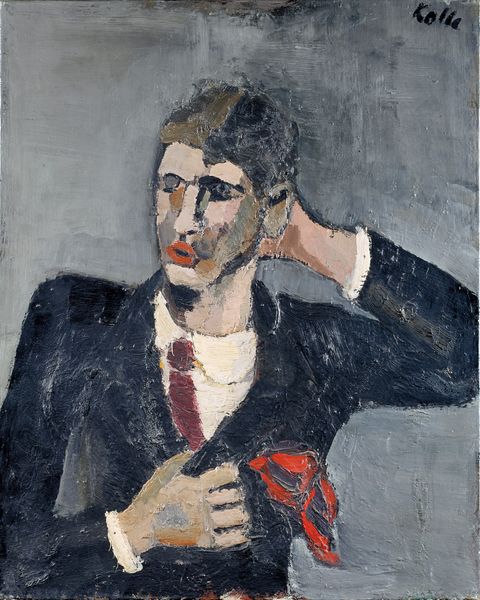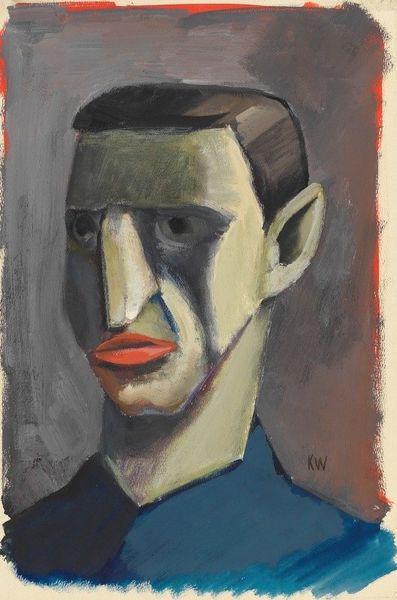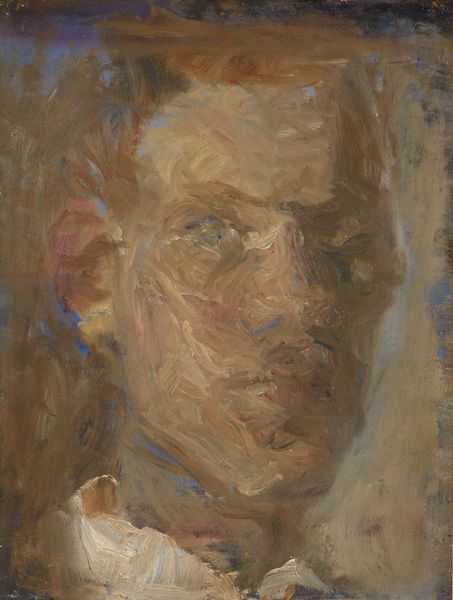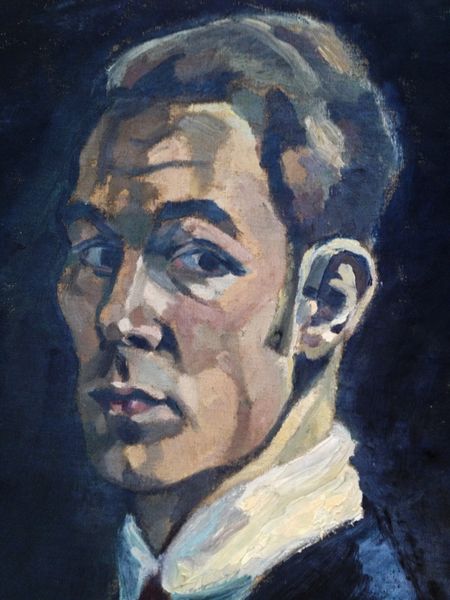
painting, oil-paint
#
portrait
#
painting
#
oil-paint
#
oil painting
#
expressionism
#
realism
Copyright: Public domain
Curator: I'd like to introduce Ferdinand Hodler's 1916 oil on canvas, "Josef Müller." It's a fascinating portrait that provides an interesting lens into the social context of art and representation in that period. Editor: It's strikingly direct, almost confrontational, wouldn't you say? There is something undeniably unsettling, especially in the rendering of the face. It is like peering directly into somebody's soul. Curator: That intensity speaks, in part, to the aesthetic currents of the time. Hodler was a contemporary of many early expressionist painters. Expressionism was on the rise at that moment, with a specific social aim to showcase inner experience. The public exhibitions that showed those portraits pushed for different criteria of what art should accomplish, and what it could display of one's soul and spirit. Editor: And what do you see mirrored back? I’m intrigued by the contrast: this conventional attire of suit and tie with this raw, almost visceral depiction. I detect perhaps an inner conflict, a struggle between outward conformity and an inner life yearning for release? It makes me consider, even in 1916, the roles prescribed by society, the expectations versus individual realities, a subject ripe for an activist interpretation. Curator: Exactly. And considering Hodler's career, you can discern his push and pull within those social currents: he needed patronage to survive as an artist, yet was driven by aesthetic and perhaps emotional and spiritual concerns. So how does he portray a sitter in a way that walks this line? And what is gained for his career through portraying his sitter in this way? He had exhibited extensively to international success in those years. So was it to showcase what expressionism could allow him to communicate, but to communicate it while representing, still, some sort of realist representation? Editor: I’m struck, too, by the absence of context. He stands starkly against a neutral backdrop. Perhaps that absence of setting becomes the point; by isolating the figure, Hodler compels us to focus squarely on the individual’s emotional state. What this work suggests, as much as other modernist works do, is a breaking down of visual standards that were previously held in European painting to that date. Curator: It certainly pushes against academic norms of the time and redefines art's societal function. I always return to that aspect when discussing art of this era. Editor: For me, it sparks deeper contemplation regarding identity and individual expression, something that connects it to modern discussions in our current society. Curator: Absolutely. Hodler gives us much to consider regarding that shift, artistically, historically, and socially.
Comments
No comments
Be the first to comment and join the conversation on the ultimate creative platform.
